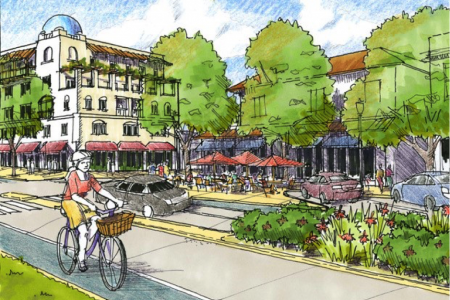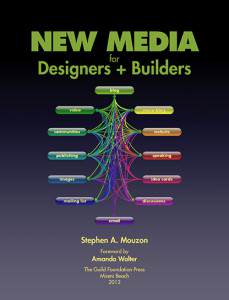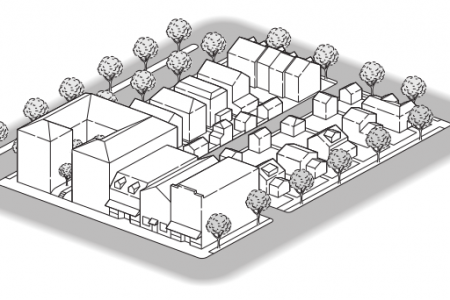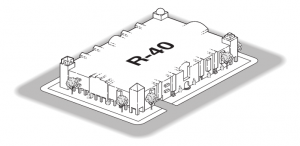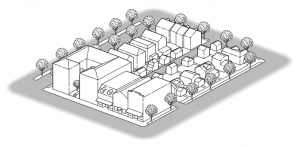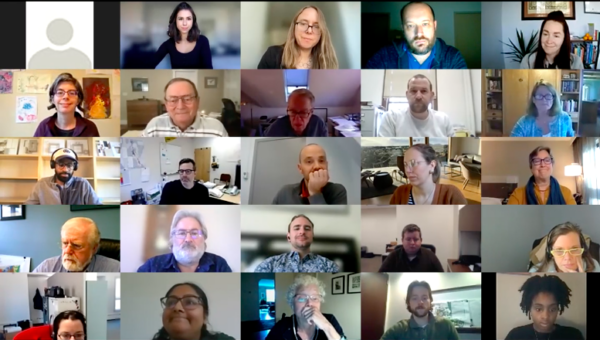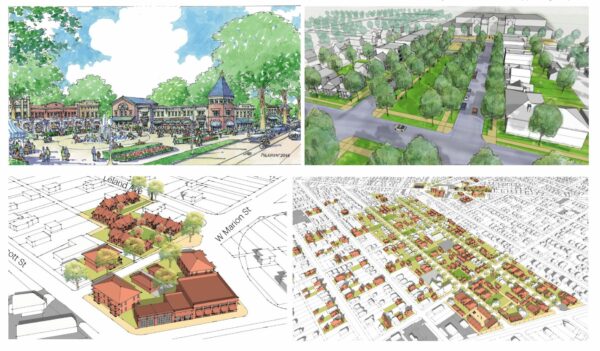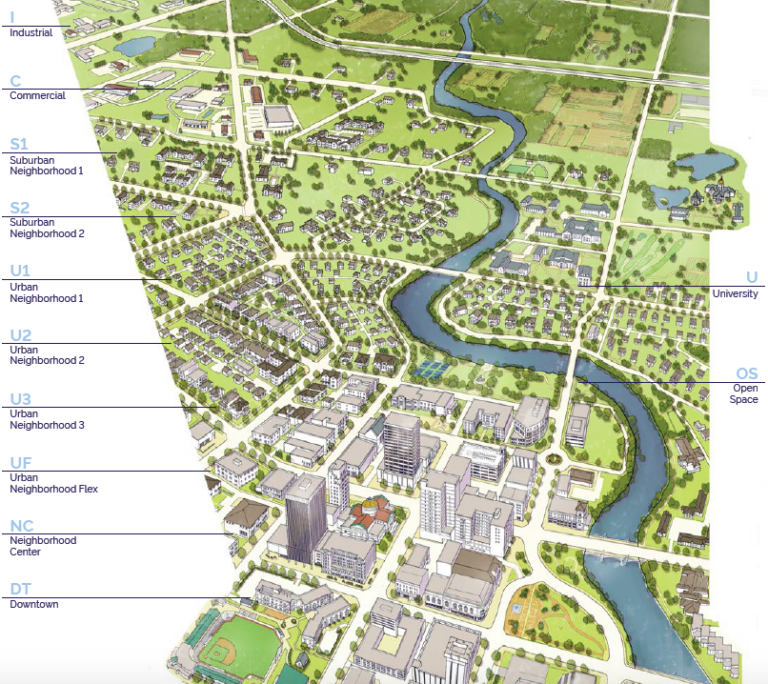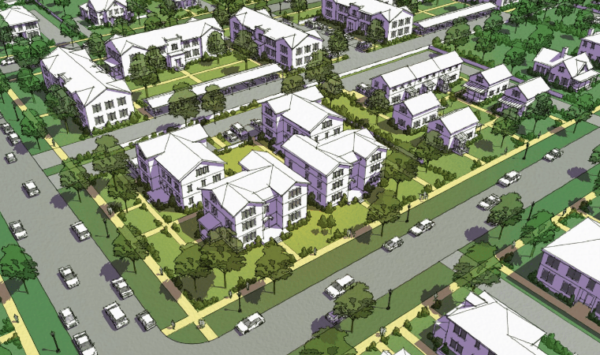Don’t miss our next webinar: Using an NCI charrette to create a vision for a form-based code
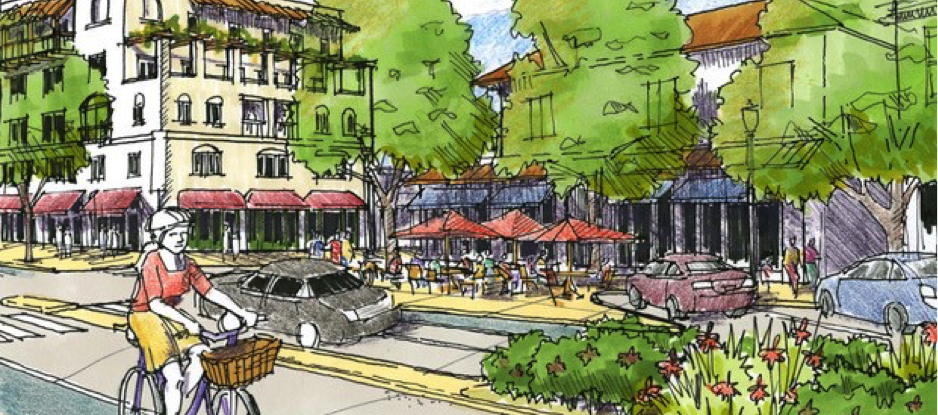 Wednesday, November 20 at 1 p.m. ET | Register >>
Wednesday, November 20 at 1 p.m. ET | Register >>
Form-based zoning codes are designed to be the regulatory framework that implements a shared vision. As communities across the country rework antiquated zoning codes or write new ones, they must first reach consensus on that vision. But creating the vision can be a time consuming challenge, adding years to the process. That’s where a charrette—a professionally-led, community-based design workshop—can be used to build mutual support for how a community looks and aspires to grow.
The Michigan State University National Charrette Institute and the Form-Based Codes Institute are partnering to deliver a joint webinar featuring experienced professionals who will explore how NCI charrettes can be used to develop a community vision for a form-based code. Charrettes have long used design-thinking and collaboration to address complex community issues like the creation of a form-based code and can significantly reduce the time to develop one.
Attendees will discover how form-based codes can make communities more walkable, mixed use and livable; and how NCI charrettes can be used to create form-based codes.
Two case studies will be presented by the charrette managers and code writers who will describe how these workshops resulted in form-based codes in Norman, Oklahoma, and Columbia Pike in Arlington County, VA. They will discuss what snags to avoid and tips to employ for a successful process and code.
- Norman, OK: Codewriters Mary Madden and Geoff Ferrell, partners at the urban design and town planning firm Ferrell-Madden; and Charrette Manager Bill Lennertz, former director of NCI.
- Columbia Pike, Arlington County, VA: Chris Zimmerman, former member of the Arlington County Board and current vice president for economic development at Smart Growth America; Inta Malis, former member and chair of the Arlington County Planning Commission and Columbia Pike Neighborhood Association president; and Charrette Manager Amy Groves of Dover, Kohl & Partners.
- Moderators: Marta Goldsmith, Executive Director of the Form-Based Codes Institute at Smart Growth America, and Holly Madill, Director of the National Charrette Institute.
Register!
What: From Vision to Implementation: Using an NCI Charrette to Create a Vision for a Form-Based Code
When: 1:00-2:15 p.m. ET, Wednesday, November 20, 2019
Who: Anyone involved in transforming communities, including city and regional planners, developers, architects, land and transportation planning consultants, and citizen advocates.
This webinar has been approved for 1.0 continuing education hours by the AIA and 1.0 certification maintenance credits by AICP.
For more information or questions about this webinar, contact Tyler Quinn-Smith at [email protected].
Top: Final design of Campus Corner in Norman, OK (Image: Opticos Design)

